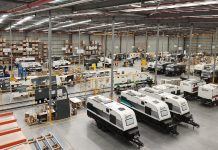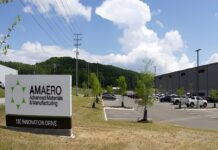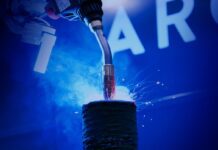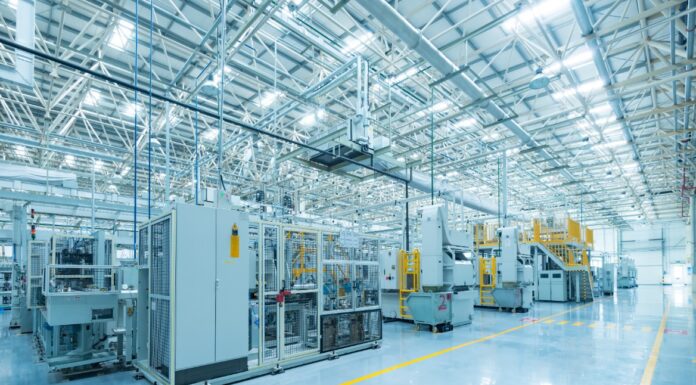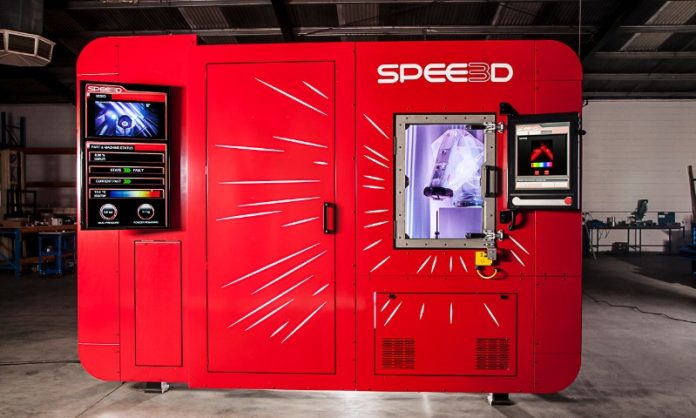
Media Release
An innovative 3D metal printing process developed by a Melbourne-based manufacturing technology business enables the printing of corrosion resistant, stainless-steel components on site, thanks to a vital funding injection.
SPEE3D was established in 2015 by Byron Kennedy and Steven Camilleri with the specific aim of overcoming the challenges of making metal parts more conveniently. Today, their mobile and adaptable printers enable the most affordable metal additive manufacturing process in the world, using metal cold spray technology to produce industrial quality metal parts in just minutes, rather than days or weeks.
Thanks to financial support from NERA (National Energy Resources Australia), the federally funded, industry growth centre established to drive growth and productivity in the energy resources sector, SPEE3D is now able to offer the printing of stainless steel parts and components.
SPEE3D CEO Byron Kennedy believes there is a huge opportunity – especially in the oil and gas industry – to produce stainless steel components on site, quickly and cheaply.
“Stainless steel is used very extensively in the oil and gas industry and when parts break or need replacing, waiting for something to be delivered to a remote location or repaired on site can cause extremely costly delays.
“SPEE3D’s onsite printing of 316L stainless steel1 means these delays can be overcome and a new part can be printed and installed in a far shorter timeframe,” said Byron.
SPEE3D varies from other competitors due to its pace of production. SPEE3D relies on the power of kinetic energy, rather than on high-power lasers and expensive gasses meaning it is 100 to 1000 times faster than traditional 3D metal printing. It is also competitive with traditional manufacturing when it comes to cost, making it the world’s most affordable additive manufacturing process.
NERA first partnered with SPEE3D in 2018 to help develop the WarpSPEE3D printer, designed to help print large scale parts commonly found in the O&G industry. Since then NERA has supported the redesign and re-engineering of SPEE3D’s printers to enable the printing of 316L stainless steel.
SPEE3D co-founder Steve Camilleri said: “NERA’s support in the development of our ability to print 316L stainless steel has been crucial. We’re confident being able to print stainless steel on demand will attract many industries to SPEE3D’s technology, particularly within the oil and gas sector, and undoubtedly bring new collaboration, sales, and export opportunities.
“Manufacturing stainless steel parts using SPEE3D technology will completely redefine additive manufacturing’s place within the sector. For the first time the supply chain will be able to source parts on demand, and substantially reduce cost,” said Steve.
NERA’s CEO Miranda Taylor added: “SPEE3D’s technology is an amazing solution to being able to produce components on site – they really are a great example of Australian know-how, collaboration and innovation.
“And now SPEE3D’s movement into producing stainless steel as a 3D printed part is really critical because – as is the case with oil and gas – there are a number of sectors in which steel is the medium of choice. The ability to produce those products at point of need using stainless steel will open up a whole new world for SPEE3D.
“We really need to be leading and participating in the race for technology and advanced manufacturing and companies like SPEE3D are absolutely critical to this. This is essential for the next generation, for the jobs of the future. SPEE3D is a fantastic example of why collaboration is so important, if we’re going to be a smart country.”
The nature of SPEE3D’s 316L stainless steel capabilities means SPEE3D can also offer industries a sustainable manufacturing option in small to medium sized production volumes, as the technology significantly reduces the amount of excess material waste and consumables required to produce parts in this material.



